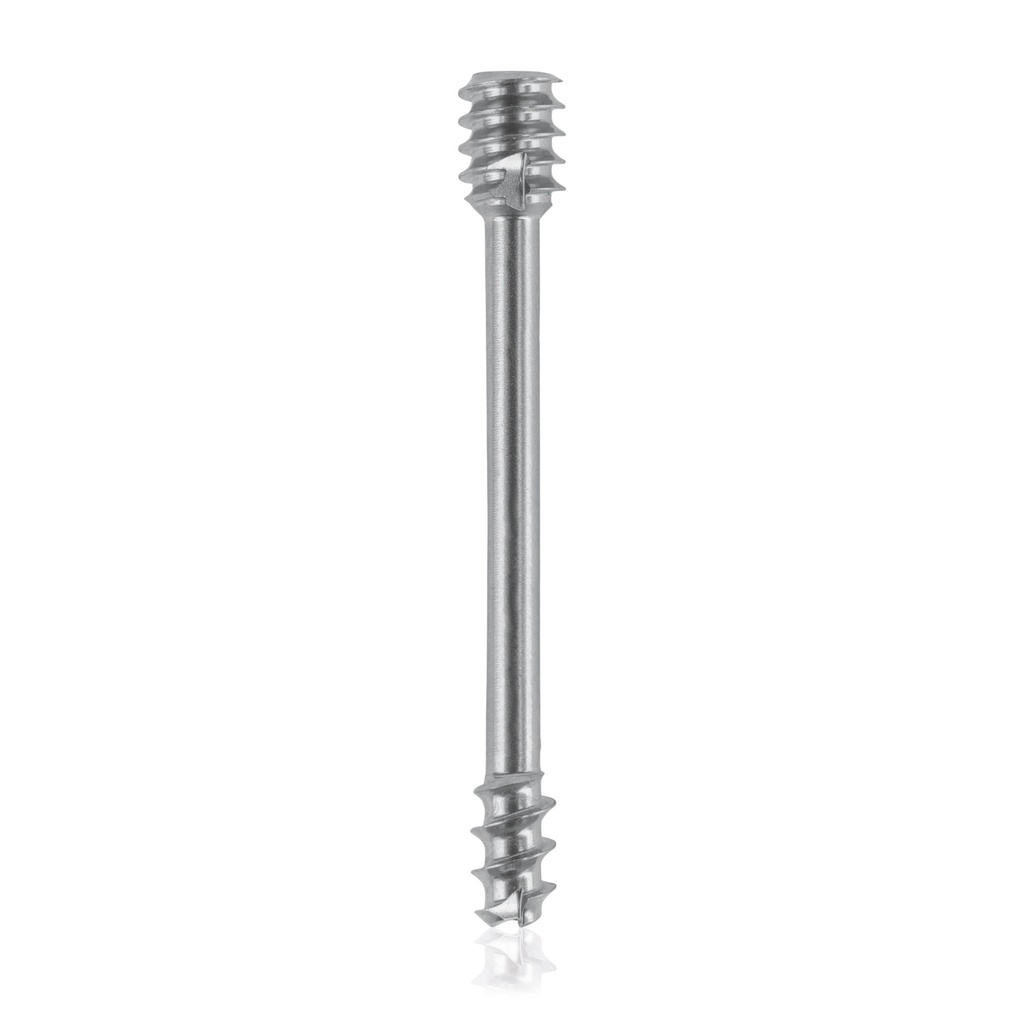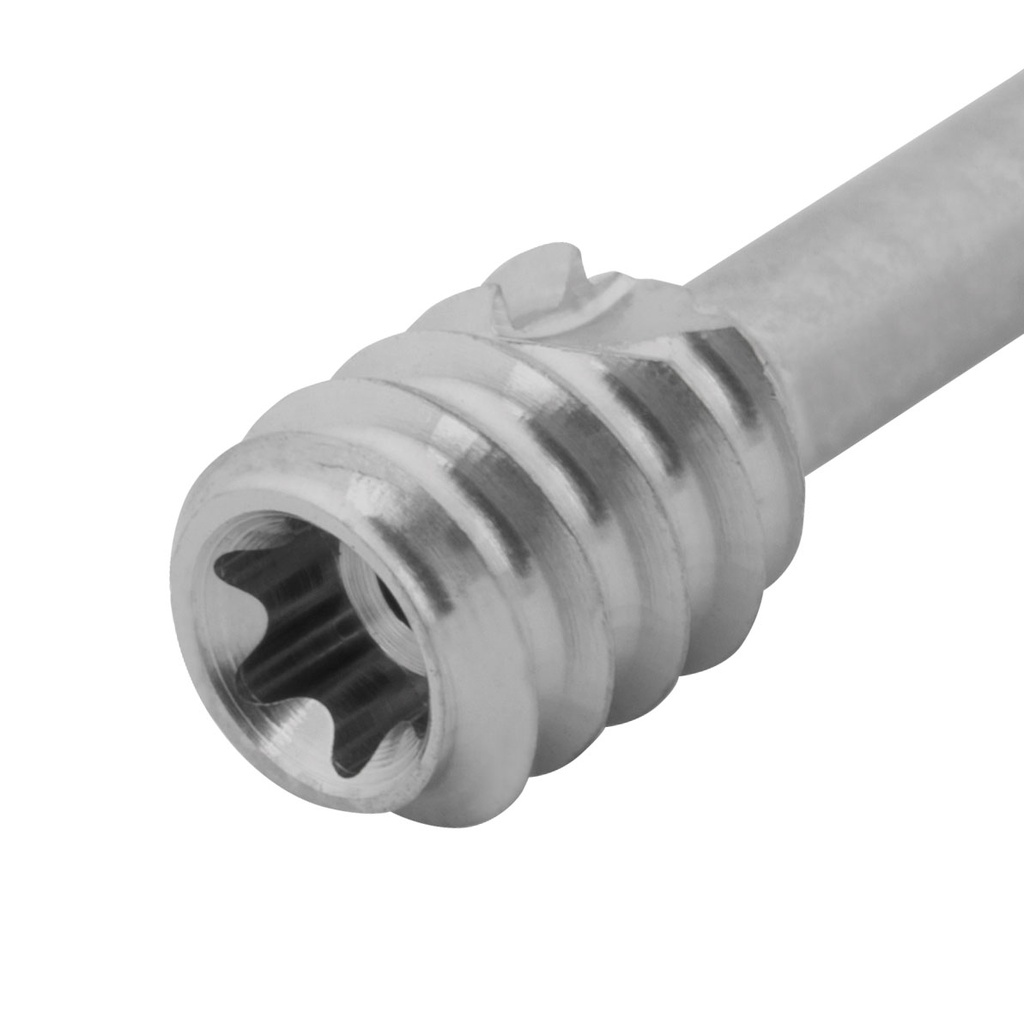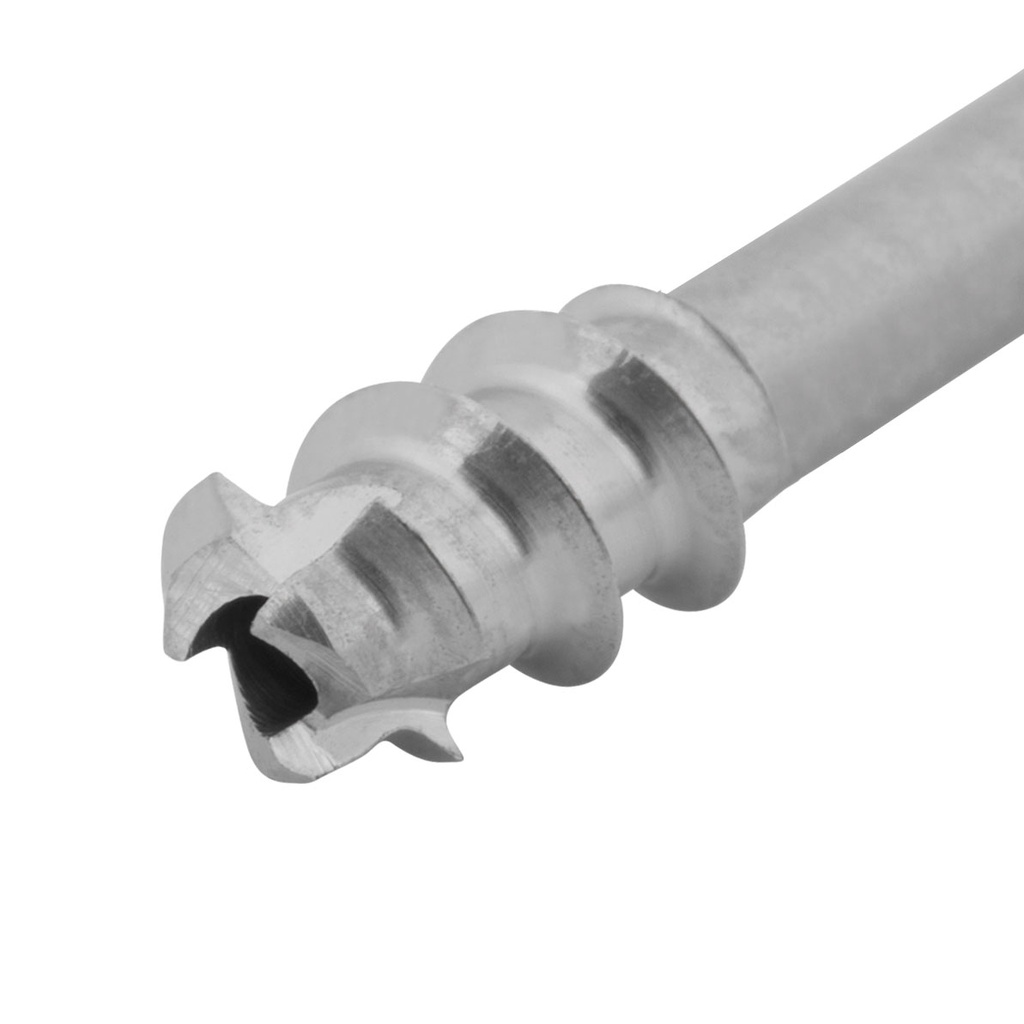Screw High compression, CBS Ø4.0, cannulated, Titanium, 30mm
With its different screw diameters and lengths, the cannulated CBS system enables a wide range of indications for the treatment of fractures in small animal orthopedics and trauma surgery. CBS stands for Compression Bone Screw and, in its function as a lag screw, enables the compression of two bone fragments.
In contrast to conventional cortex tension screws, (which are inserted using a smaller pilot or threaded hole in the distant cortex and a larger spacing or gliding hole in the proximal cortex), the cannulated CBS is screwed in using a KIRSCHNER guide wire. The principle of operation of a lag screw with compression screw is achieved in that the threads on the head and the shaft end have different pitches. This pitch difference causes the interosseous compression. The temporary fixation of the bone fragments with the KIRSCHNER drill wire enables a largely minimally invasive procedure on the one hand, and on the other hand precise screw placement via the KIRSCHNER drill wire.
The cannulated CBS system is modular and designed for different patient sizes: It comprises a basic instrument set and 4 modules (toy breeds / cat, dog small, dog medium and dog large). The individual modules include a selection of screw lengths and the instruments required for the respective implant size, which are required in addition to the basic instrument set.
Compression screws made of titanium:
- Self-drilling & self-tapping
- Cannulated for minimally invasive technique and guided insertion
- Minimisation of soft tissue irritation through self-tapping grooves on the head thread
- Cut-back flanks in the head and shaft for easier explantation
- Different diameters (3.0, 4.0, 4.5, 5.5 and 6.5 mm) for a wide range of indications
- Screw and thread design enable optimal fixation
- Optimistion of fracture or osteotomy compression
Technical characteristics:
- Screw material: titanium (TIA16V4)
- Easier removal of the implants after fracture healing
- Improved fatigue strength of the implants
- Reduction of inflammation and allergy risk
- Titan makes fewer artifacts during cross-sectional imaging examinations
- Biocompatible
- Surface anodized with a uniform, continuous passive layer
- Color-coded for easy determination of the size diameter
Application:
The compression screws can be used as single implants or in combination with additional KIRSCHNER drill wires to increase the rotational stability with a target instrument such as B. the PinPositioner (191370) or PinCube (191348) can be used as a guided insertion.
Indications:
Fractures, corrective osteotomies, non-union arthrosis, degenerative changes in small bones:
- Sacroilial dislocation
- Isolated anconaeus process (IPA)
- Incomplete ossification of the condyle humeri (IOC)
- T / Y fractures of the humeral condyle
- Intracondylar fractures of the distal femur
Surgical technique:
Temporary fixation with the KIRSCHNER drill wire
Caution: Carefully insert the guide wire to avoid possible bending (tip: briefly grasp the thin guide wires and push them in).
Optional drilling
In the case of strong cortical bone, it is possible to drill out to the core diameter in order to facilitate the insertion of the compression screw with stable angles.
Drill over the guide wire with the drill bit.
Attention: The end of the guidewire must not be drilled over to ensure that the guidewire is firmly held.
Optional use of a cortical bur
If the bone is surrounded by little soft tissue or if the bone quality is very good, the use of the cortical bur is recommended to minimize the protrusion of the screw head in the cortex and soft tissue irritation and to counteract possible deformation of the instruments.
Determination of screw length
Place the length gauge over the guide wire and guide it through the soft tissue to the bone. Then read off the required length at the end of the guide wire.
Placing the screw
Screw in the compression screws over the guide wire with the screwdriver (cannulated, AO shaft) up to the head thread. Then remove the guide wire and countersink the screw to the bone surface.
- Ø 4.0 x L 30 mm
- Cannulated
- Silver
- Torx 8
- Self-drilling, self-tapping





